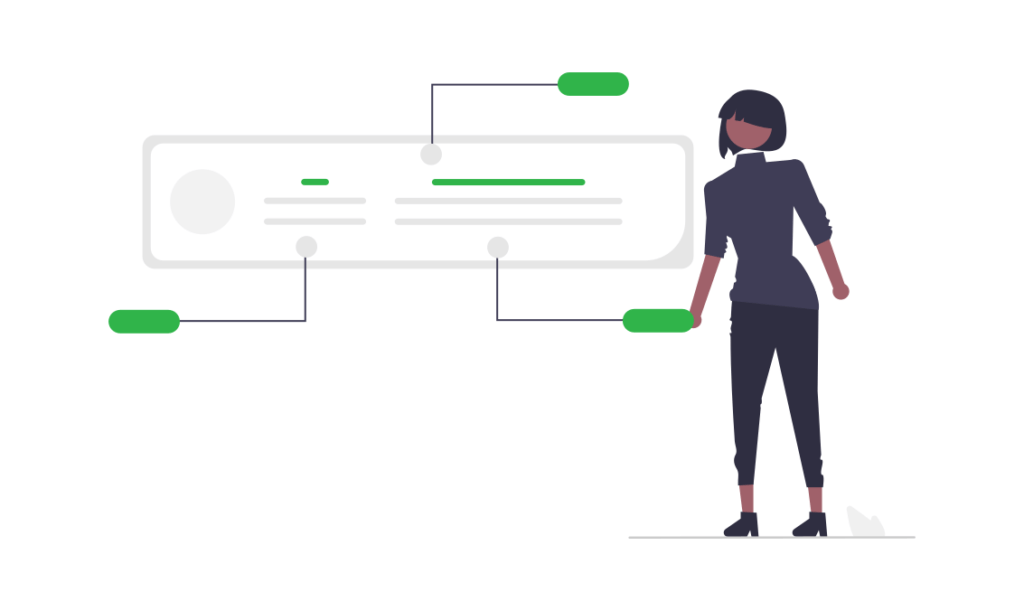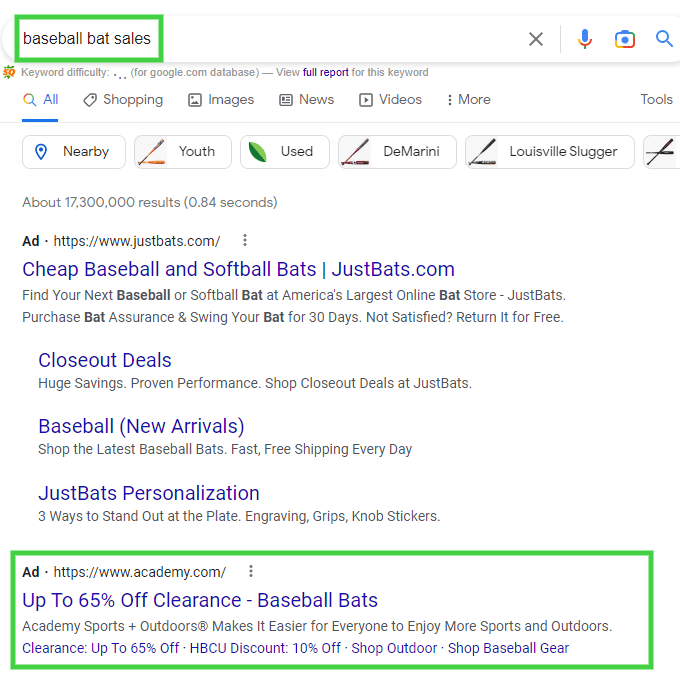At some point in your paid media journey, you may eventually find yourself contemplating whether or not you should try using Maximize Clicks, a fully-automated bidding strategy with a pretty self-explanatory name. Your thinking may be that you want to capture as many clicks as possible, and Max Clicks sounds like it fits the bill. Yet just below it is a more complicated and mysterious bidding strategy called Target Impression Share, which sounds too fancy to be ignored.
So now onto the choice you didn’t know you needed to make: Target Impression Share vs Maximize Clicks.
Simply put, Max Clicks can sometimes burn through budget, raising your CPCs and CPAs. This is true of any new bidding strategy in the short term due to the learning phase, but Max Clicks is seems to be particularly aggressive in ad auctions. To put it another way, you probably won’t fail to spend your full budget if you’re running Max Clicks – Google will find a way to spend that money.
This is particularly concerning since this bid strategy doesn’t have an underlying goal of getting you conversions at a certain volume or CPA. You’re able to place a limit on the CPC you want within this campaign, but even this has proven less effective than a proper implementation of tIS.
The key to understanding why tIS is a better choice is to reframe the way you’re thinking about your strategy. If, for example, you’re wanting to use Max Clicks on a campaign that is targeting your branded terms, then it makes sense to think that you want as many of those clicks as possible. However, due to the aggressive nature of Max Clicks, this often ends up being a very inefficient approach.
It’s also common to find that your Impression Share is actually much lower than what you want for the terms you’re going after. If Max Clicks overpays on the first few clicks in the morning, then you’re out of the running for the rest of the day.
If you reframe it as, “I want to show up for at least 90% of my brand searches, but I want to keep my CPCs within reason.” then you start to see why tIS might be a better fit for capturing high-value traffic or playing defense on your own brand.
Target Impression Share lets you control the percentage of searches you want to show up for, and the Max CPC that you’re willing to pay. This gives you another control mechanism that tells Google not to blow your budget on the first few clicks. I don’t mean to personify the bidding strategies too much, but that seems to help taper Google’s aggressiveness in the ad auctions, and makes your budget go further.

A quick and easy way to set up Target Impression Share (tIS) for one of your campaigns is to look at the average CPC for your target keywords and set that as your Max CPC limit. Then add in the target Impression Share, which you should keep somewhere at or above 80%. Give the campaign 5-7 days to complete the learning phase and then let it collect data.
If the campaign is doing well after 2 weeks (as in, lower CPA than you were seeing before), consider raising the impression share to get more of that traffic. If that doesn’t change anything after a week or so, you could consider raising your Max CPC limit.
If you aren’t getting as much volume as you want or performance is worse than before, consider lowering your Max CPC to see if there is a cache of less-expensive clicks that you can go after.
Also, never be afraid to revert back to your previous strategy if tIS continues to underperform – sometimes other things just work better, and there’s no reason you shouldn’t lean into that (just make sure you try figuring out WHY the old strategy works better!).
If you still have questions about Max Clicks vs tIS, or any other PPC campaign management concerns, our team is here to assist.
Reach out to schedule a free initial consultation.
But first, feel free to see what our clients have to say about us.
Paid search ads, also known as pay-per-click (PPC) ads, have become an increasingly popular way for businesses to generate leads and drive sales. In particular, PPC ads can be a cost-effective way to market a new business, as they allow businesses to reach their target audience quickly and efficiently.
Using this post, we will discuss why paid search ads can be a cost-effective way to launch a new business.
Pay-per-click (PPC) ads are a type of online advertising where businesses pay a fee each time their ad is clicked. These ads are typically displayed on search engine results pages (SERPs) or on other websites that participate in the advertiser’s pay-per-click program. PPC ads can be targeted to specific keywords and demographics, and businesses can set a budget for their campaigns.
The goal of PPC is to drive relevant traffic to a website or landing page in order to generate leads, sales, or other conversion actions by targeting specific search intent of search engine users.
Some popular platforms for PPC advertising include Google Ads, Microsoft (Bing) Ads, and even social media platforms such as Facebook Ads.
Pay-per-click advertising, unlike SEO (search engine optimization), can offer instant results SERP. There is no need to wait to build authority after having your content indexed, as with SEO. Instead, your ads only need to be approved with a valid payment method.
It is possible to reach the first page of SERP in under 24 hours with PPC, whereas this would be an impossible feat with SEO. Often SEO keyword mapping will reveal that target keywords are too competitive to win with SEO in organic search results, even in the long-term, so paid search is the only way for the business to gain exposure to users for certain queries.
One of the biggest benefits of paid search ads is that they are cost-effective. Businesses only pay when someone clicks on their ad, which means that they are only paying for the people who are actually interested in their products or services.
This is a much more cost-effective way of reaching potential customers compared to traditional advertising methods, such as TV or print ads, where businesses are paying for advertising space whether or not anyone is actually interested in their products or services.
In addition to only paying for clicks, organizations can closely monitor the KPI metrics and spend of their PPC ad campaigns, allowing for real-time campaign optimizations.
Paid search advertising allows businesses to reach their target audience quickly. When a business launches, it is important to get the word out about the business as quickly as possible. Paid search ads allow businesses to do this by targeting specific keywords and phrases that are relevant to their products or services. This means that when someone searches for those keywords, the business’s ad will appear at the top of the search results. This allows the business to reach potential customers quickly and efficiently.
PPC also allows businesses to track and measure their results, much more so than with traditional marketing, as PPC is a form of digital marketing. One of the biggest challenges of launching a new business is not knowing if your marketing efforts are working.
Paid search ads allow businesses to see how many people are clicking on their ads, how many are converting into customers, and how much revenue is being generated. This allows businesses to make data-driven decisions about their marketing efforts, which can help them improve their results and ad spend efficiency over time.
Paid search allows businesses to target specific demographics, such as age, gender, location, and interests. This allows businesses to reach their target audience more effectively and generate more leads and sales.
For example, if a business is selling a product that is targeted towards women, they can target their ads to women who are interested in similar products. This allows the business to reach their target audience more effectively, which can help them generate more leads and sales.
PPC platforms, such as Google Ads, allow businesses to easily A/B test ad copy. Also, businesses can test different ad copy and landing page design combinations, so they can see what permutations work best. This allows businesses to optimize their ads over time, which can help them generate more leads and sales.
For example, a business can test different headlines, images, calls-to-action, and landing pages to see which combinations generate the most clicks and conversions. By discerning which ad copy and landing page design combinations work best, organizations can optimize the performance of their paid search campaigns, improving their conversion rates and CPA (cost-per-acquisition).
Paid search campaigns offer the ability quickly build retargeting and remarketing lists of relevant users. By using paid search ads to drive relevant website traffic to content aligned with searchers intent, you can convert previous website users at various stages of the marketing funnel using retargeted display ads.

For example, lest say I’m in looking to buy a baseball bat for my child and I run a query on Google search for “baseball bat sales”. After seeing a PPC ad offering “Up To 65% Off Clearance – Baseball Bats” from www.academy.com, I click the ad. Even if I don’t make an immediate purchase, I could be saved into a retargeting audience in the Academy Sports Google Ad Account thanks to the cookie that came with the ad click.

Academy Sports could then use the retargeting audience to show me and other users that searched for baseball bats (and didn’t make a purchase) various baseball bat display ads as we surf the web.
If you are launching a new business, reach out to our team to schedule a complimentary consultation. We will let you know if paid search advertising would be cost effective for your business model, free of charge.
Let’s dig into your goals and unearth the possibilities.
We are a performance marketing agency, so our contracts reward performance. We don’t get paid more unless you do.